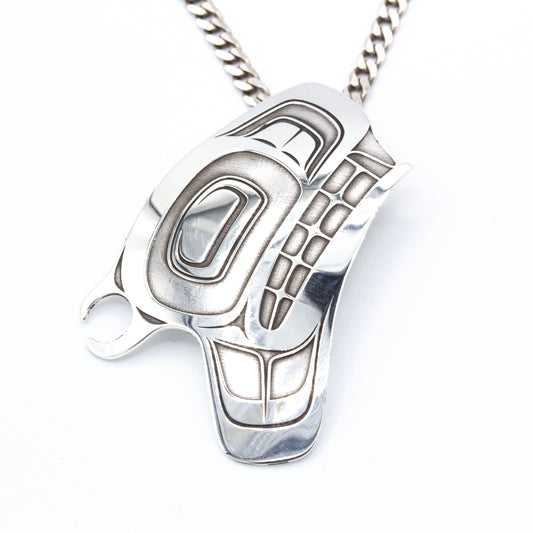Collection: The Killer Whale Symbol
Both revered and feared, the Killer Whale has a long history of being the hunter of the sea. Understandably, it is sometimes referred to as the “Wolf of the Sea” (Shearer). Some stories put the Killer Whale and the Wolf as one the same, merely shifting shape/form whether on land or in the water.
Indigenous Significance of the Killer Whale Symbol
Many Indigenous groups consider Killer Whales to be ancestors, even reincarnations of great chiefs (Shearer). It is common for family members, especially those in the position of an elder, to share stories of Killer Whales visiting them during the day, and during their dreams, especially on important days like funerals and weddings.
The traits and characteristics of the Killer Whale are strength, dignity as well as prosperity and longevity (Shearer). To see a Killer Whale with multiple dorsel fins in Indigenous art is to depict the supernatural entity and power that is the Killer Whale.
We get much of our knowledge about the Killer Whale from the Haida Nation, but also from others like the Tsimshian, Heiltsuk, Nuu-Chah-Nulth and Lummi (or Lhaq'temish) people, just to name a few. The Killer Whale, in many forms, will show up as a family crest. Sometimes it will appear in the talons of the Thunderbird, or an Eagle occasionally. On totem poles, the Killer Whale appears with its dorsal fin sticking out, like in the “Female Welcoming Figure” pole, located at the Vancouver School Board head office, carved by Chrystal & Chris Sparrows.
In recent years, with dwindling Salish Sea Orca population, we have come to cherish and celebrate how this matriarchal-led species is fighting to regain it's rightful position in the natural world.


